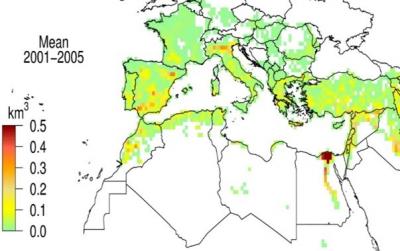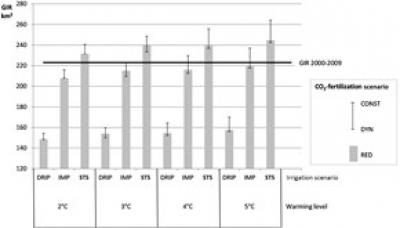Marianela Fader (OT-Med post-doc)
Alberte Bondeau, Wolfgang Cramer (IMBE)
This project focuses on testing the potentials of solar energy to drive future irrigation requirements in the Mediterranean region. The project research questions are :
1. Does climate change increase irrigation water requirements in the Mediterranean area?
2. How much energy demand increase can be expected due to higher irrigation water requirements?
3. How much money and roof surface would be needed to drive irrigation fully with solar energy?
4. Can a switch of irrigation systems reduce irrigation water requirements and/or energy requirements of irrigation today and in future?
This project makes use of geographical and statistical as well as modelling experiments. It formalises the link between land use and water balance via the LPJmL ecosystem model, which is a process-based, biogeochemical, dynamic global vegetation and hydrology model.
10 new crop functional types (particularly the agricultural trees) have been introduced within the agro-ecosystem model LPJmL for an improved representation of the Mediterranean agriculture. 75% of the cropland area (88% of the irrigated area) is now accounted for, allowing estimations of the gross irrigation water requirement (GIR) under different scenarios of climate, socio-economic, and technological change. The simulations show that:
- at present, the Mediterranean region could save 35% of water by implementing more efficient irrigation systems.
- in the future, the region might face a GIR increase between 4% and 18% from climate change alone if irrigation systems are not improved, or between 22% and 74% when adding the population growth factor (affecting mainly the Southern and Eastern Mediterranean).
- the area of solar panels required for irrigating the fields could be mainly provided by the roofs of farm buildings (now and under climate change scenarios).
This project was a stepping stone for the LAND part of the LASERMED project.
|
Annual Gross Irrigation water Requirement (GIR) (Fader et al. 2016) |
Future annual GIR under different climate and technical scenarios DRIP : drip irrigation |




